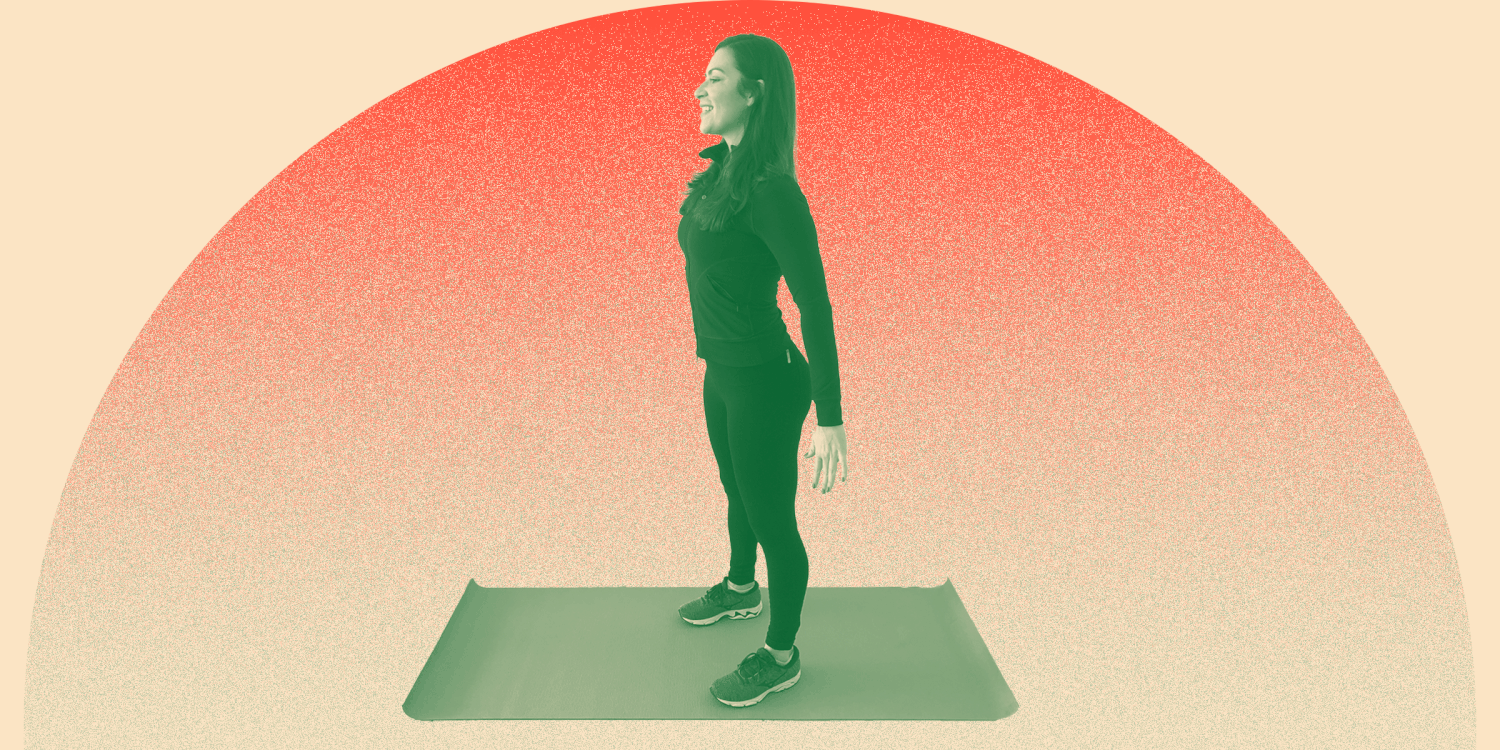We do squats as part of our daily lives — from picking up boxes or putting down a child — so the familiarity of the move may leave you assuming you know the right way to do it. But the proper form needs to be learned and practiced in order to avoid injury. There are also a few squatting mistakes people make that can make the exercise less effective.
So, if you’ve been doing squats and have pain or are not seeing results, it may mean you need to improve your form. The most common injury from doing squats incorrectly is back pain, so be sure to keep your lower back in a neutral position — don’t arch it or tuck the pelvis too far forward (more on this later). Doing the move correctly can also mean increased calorie burn, since performing the high-intensity exercise long term will increase muscle mass.

If you hurt yourself, you’re likely to stop doing them or quit exercising entirely for a time. An average-sized person burns more than 200 calories doing weight-training exercises like squats, according to , so it’s worth it to learn the correct way to do them and make the move part of your regular workout routine. If squats are difficult for you, you can always modify the move using a chair.
If they are easy for you, you can up the difficulty by using weights, specifically dumbbells. Here's everything you need to know to make you confident in how to do a squat, an important building block of any exercise routine. Squatting has many benefits for your athletic performance and overall health.
These include: Small adjustments in the way you perform a squat can drastically alter the demand they have on our muscles and the effectiveness of the exercise. Stand with your feet shoulder-width apart and your toes pointed forward. As you move through the exercise, be mindful that your knees never go forward past your toes.
Keep your chest up and make sure not to tilt your head down. Pull your navel in toward your spine to engage your core. Bend at the hips and knees while keeping your heels and toes on the floor.
Slowly sit back into a squat position with your chest up, your shoulders back and abs in. Make sure your knees are not crossing over your toes and you are as close to a 90-degree angle as possible. Straighten your legs by pressing into your heels to stand back up.
Squeeze your glutes at the top, tilting your pelvis forward. When lifting the body back into standing position, many people rely too much on the hamstrings, instead of pushing down through heels to stand. This mistake is a major reason why people don’t see the desired .
Another common mistake includes starting the squat at the knees. I recommend initiating movement at the hips. Putting too much pressure on your , and it’s not necessary to complete an effective squat.
To avoid this, pretend that you’re reaching your hips and glutes back to sit down in a chair behind you. At the same time, make sure that you’re reaching around a 90-degree angle at the knee when squatting. The positioning of your knees is critical in how effective a squat is and bending your knees at a 90-degree angle helps to activate the right muscle groups.
A lot of people bend too far down to the point where their butts almost touch the floor, which places too much . If you experience pain or lack of balance while squatting, don’t worry — squats can be tricky. A modified version can help you get the form down before graduating to a full squat.
If you lack balance, use an exercise ball. While standing, place the exercise ball between your back and the wall, and perform a traditional squat while leaning on the ball. Having the wall behind you can be comforting and ensures that you engage the right muscle groups.
You can also modify squats with the help of a chair. Stand in front of a chair with your arms out in front of you so that they are parallel to the floor. Bend at the hips and sit back until you feel yourself touch the chair.
This will help you practice proper form and master the 90-degree angle, ensuring that your knees do not push out past your toes. Once you master the basic squat, you can take things up a notch by adding weights. Simply hold one in each hand and keep your arms at your sides.
As you squat down, slide the weights down your legs, keeping your shoulders down and chest open. Keep your arms glued to your sides as you return to stand. These exercises will teach you how to properly engage your body when doing a full squat.
Prep your body for the real deal by standing a few feet in front of a counter, holding onto it with your fingertips. Reach your butt back and sit down into a mini squat. Press down through your heels to stand back up.
Repeat 10 times. Prep your feet to properly do a squat. Start with your feet as wide as your hips.
Press down through your heels to lift your toes up off of the ground and then release them. This prepares your heels and the backs of your legs to engage as you press down to come up from a squat position. Repeat 10 times.
Stand with your feet a foot away from the wall with your back pressed against the wall. Pull your abs in to tilt your pelvis so that your low back presses harder into the wall. Release and repeat 10 times.
This is the abdominal engagement you want to feel while you’re doing a squat. Kneeling on a mat with your knees as wide as your hips and hips upright over your knees, pull your abs in and reach your arms forward in front of you. Then gently lean back to move your glutes toward your heels.
Come back to the starting position and squeeze your glutes. Repeat 10 times. It's best to consistently include the basic squat in your routine and master the form before you attempt more advanced squat variations.
Once you feel comfortable with the basic squat, these squat variations are great to keep things interesting and continue to challenge your lower body. Some of them include: Stephanie Mansour is our TODAY Fitness contributor, a certified personal trainer and a yoga and Pilates instructor. She also leads workout routines and challenges in our new Start TODAY app.
The app brings together the best in wellness, providing on-demand fitness videos, weekly and monthly fitness challenges, custom healthy meal plans geared toward your goals and daily inspiration to keep you moving..
Health

What’s the correct way to squat? A trainer reveals how to get the most benefit for your glutes

How to squat correctly can be challenging. A trainer shares tips, common mistakes and how to get the most health benefits for muscles, glutes and stability.















